Mr. Ho Viet's family (Rao Tre village, Phuc Trach commune) is one of the pioneer households in the village to sow the first agarwood pots on the hillsides. From being only familiar with growing corn and cassava, he now boldly tries his hand with nearly 200 agarwood pots, a tree species considered the "green gold" of the mountains and forests.
Mr. Ho Viet shared: “In the past, we only knew how to clear fields to grow corn and cassava all year round, but the harvest was not much, life was very difficult. Now that the army has guided and provided seeds, I have boldly tried to grow them. I don’t know how long it will take to harvest agarwood trees, but seeing the trees grow greener every day, everyone is very excited.”
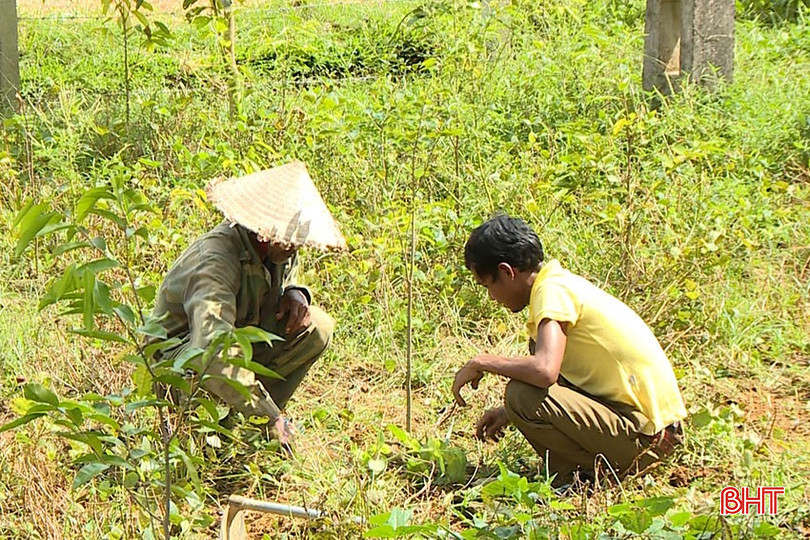
Not only Mr. Viet’s family, up to now, nearly 10 households in the village have followed in the footsteps of planting agarwood, and other households are also registering to receive seeds. The young plants have begun to take root, opening up a new livelihood for the Chut people.
To help people feel secure, the Border Guards of Ban Giang Station have set up a nursery of about 1,000 Agarwood trees right in the station grounds. These seedlings are provided free of charge to the people. Not only do they distribute seedlings, the Border Guards also organize technical training on how to dig holes, fertilize, protect from the sun and rain, and prevent pests and diseases... At the same time, they encourage households to intercrop cassava, beans, and other short-term crops to help increase immediate income and reduce pressure while waiting for the Agarwood to mature.
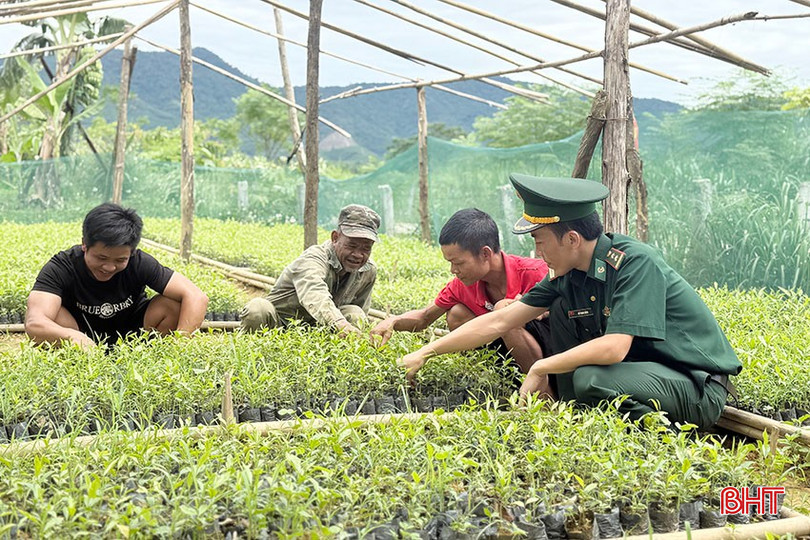
Major Doan Van Tiep (Rao Tre Working Group, Ban Giang Border Post) is a pioneer, spending tens of millions of dong of his own money to buy seeds and grow plants so that people can have plants.
“Agarwood trees are suitable for the climate and soil here. If well cared for, after 8-10 years, people can exploit them, the economic value is many times higher than cassava and corn. We hope people will consider this as a long-term direction, not just an experiment” - Major Doan Van Tiep said
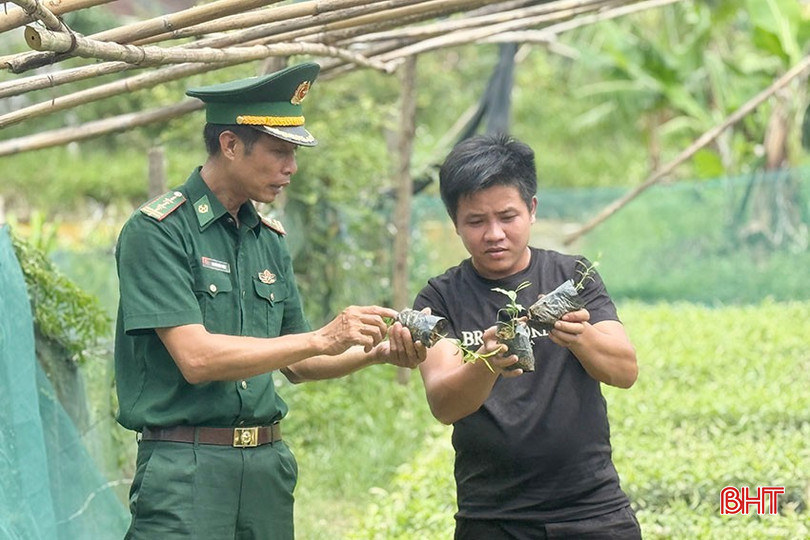
Putting agarwood into production not only helps improve the economy but also gradually changes farming practices, helping the Chut people stick with slash-and-burn farming instead of shifting cultivation and nomadic living as before. Ms. Ho Thi Linh (Ban Rao Tre, Phuc Trach commune) said: "I grow agarwood not only to hope to have income in a few years, but also to think about my children and grandchildren. With the help of the army, people try to preserve and take care of the trees so that they can live healthily, and life will no longer be difficult."
According to Lieutenant Colonel Nguyen Ha Giang - Head of Ban Giang Border Guard Station (Border Guard of Ha Tinh province), in addition to the task of protecting the border, the Rao Tre working group with 6 officers and soldiers also accompanies people to eliminate bad customs and guide effective production. "The agarwood growing model has initially proven effective, opening up prospects for sustainable poverty reduction for people. In parallel with agarwood, the Border Guard also coordinates with local authorities to develop models of growing rice, corn, cassava, raising livestock and poultry, creating diverse and sustainable livelihoods."
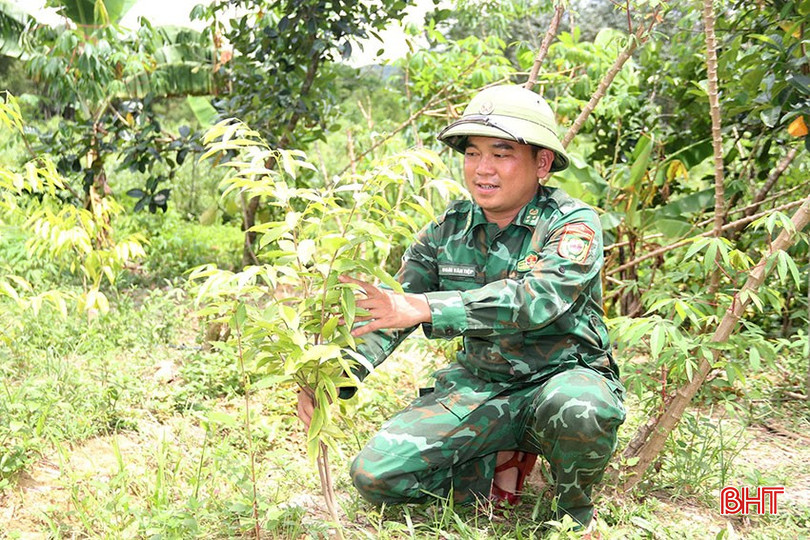
According to agricultural and forestry experts, agarwood trees have few pests and diseases, are easy to care for, and are suitable for the soil conditions of the mountainous region of Ha Tinh . After 8-10 years, agarwood can be exploited, bringing economic value of hundreds of millions of VND per household if invested and cared for properly. For the Rao Tre people, the young agarwood pots today are not only a new crop but also the hope for a sustainable livelihood. This is also the direction that the local government is interested in, becoming a livelihood model to help increase income and stabilize the lives of the Chut people.
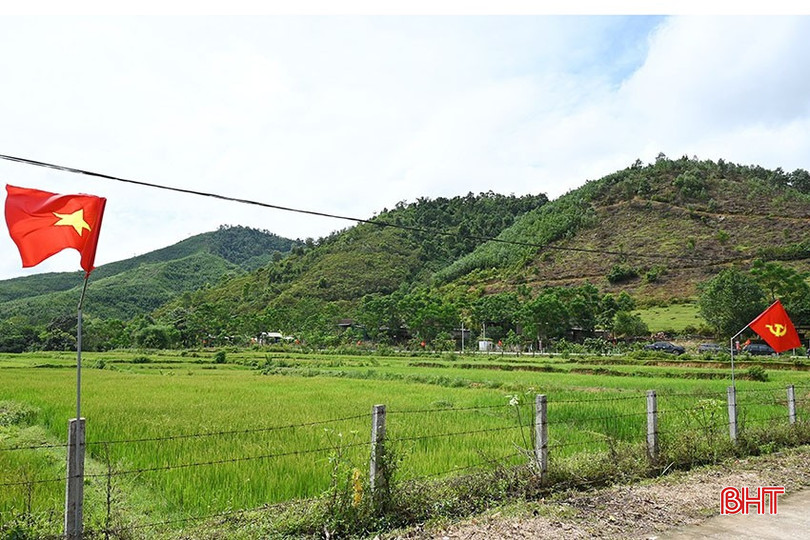
Mr. Le Nguyen Kien Cuong - Vice Chairman of the People's Committee of Phuc Trach Commune said: "After the Border Guard helped the Chut ethnic people to plant agarwood on a trial basis, the commune government also coordinated to train and guide the people on tree planting techniques. In the long term, the commune will have a plan to support seeds, provide technical training, and connect with businesses to create stable output for products, helping the Chut people truly escape poverty sustainably."
Source: https://baohatinh.vn/nguoi-chut-thu-nghiem-uom-vang-xanh-cua-nui-rung-post296296.html






![[Photo] Soldiers guard the fire and protect the forest](https://vphoto.vietnam.vn/thumb/1200x675/vietnam/resource/IMAGE/2025/9/27/7cab6a2afcf543558a98f4d87e9aaf95)






























![[Photo] Prime Minister Pham Minh Chinh attends the 1st Hai Phong City Party Congress](https://vphoto.vietnam.vn/thumb/1200x675/vietnam/resource/IMAGE/2025/9/27/676f179ddf8c4b4c84b4cfc8f28a9550)




























































Comment (0)